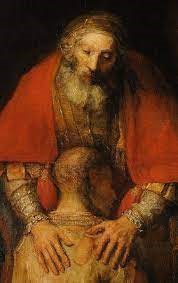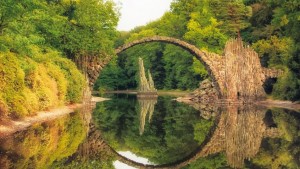Some weeks ago, listening to BBC Songs of Praise, the hymn “Beauty for Brokenness” by Graham Kendrick triggered in me a myriad of thoughts at first centred on the word “Brokenness.” At the time we were still in the middle of the second more threatening lockdown, with the deeply emotional events of Passiontide still etched clearly in hearts and minds.
Looking at the world today from this perspective, we are deluged with examples of devastation, anger, fear, selfishness, greed, sickness, pain, hunger, abuse — the list is long and fearful! What has happened to our amazing, awesomely- beautiful, God-given gift of creation? What have we done? What is the answer? Have we yet reached the nadir of chaos? Is it not up to us to change the direction of our view and our lives?
Christ himself accepted his humanity, and experienced the very depths of pain and despair, human hatred, degradation and violence, yet he never gave up hope and trust, that he would rise to a new life of glory, because his Heavenly Father so loved the world.
 Through hope and trust, we too, even now, can have glimpses of that glory if we change direction: if we look onwards and upwards beyond brokenness to the “Beauty Ever Ancient and Ever New.” I’ve heard it said that “BEAUTY is God’s handwriting,” and God writes all over the world. His beauty is obvious if we SEE rather than LOOK.
Through hope and trust, we too, even now, can have glimpses of that glory if we change direction: if we look onwards and upwards beyond brokenness to the “Beauty Ever Ancient and Ever New.” I’ve heard it said that “BEAUTY is God’s handwriting,” and God writes all over the world. His beauty is obvious if we SEE rather than LOOK.
Even out of chaos, beauty manifests itself, and we have seen how well God manages that. And just as God created the world out of chaos, men and women through the centuries have been empowered to create incredibly uplifting works of genius even when their world was falling about them.
There are so many of these but the following really stand out for me as the pain and anguish is palpable and the beauty and joy of relief is even stronger. There is Beethoven’s 9th Symphony composed at a time of turmoil and change and inspired by Friedrich Schiller’s poem “Ode to Joy” where he speaks of “Joy, brilliant sparks of the gods” when people work together in freedom. The music certainly depicts this and has the great beauty and power to lift one to the seventh heaven!
Rembrandt’s painting of the return of the Prodigal Son is a great example of tenderness, love and complete forgiveness—love and beauty, so intensely moving. The past is forgotten—a feast is prepared! Such happiness and joy must be worth the pain.
Florence Nightingale’s small candle radiates healing and hope in the darkness and despair of war hospitals.
The Agnus Dei of Karl Jenkins’ “Armed Man” where the cello’s tones touch the deepest depths of the soul, where the “Lamb of God” offers mercy and everlasting peace and joy because he has come through it all through a glorious resurrection.
The reconciliation and heroic act of forgiveness from the film “The Railway Man” who endured horrific acts of torture and degradation at the hands of his prison guard. So intensely moving.
The list is endless and it is still going on today, through all the NHS Workers, Carers, Teachers, Volunteers Support workers, all creating beautiful havens of loving care, compassion, generosity, trust, hope and beauty.
Yes, beauty is not only a panacea for all the ugliness, violence, desolation, fear and depression which surrounds us, but seeing, feeling beauty gives a lightness of spirit that gives hope, raises us up to reach the zenith of God’s glorious creation.
YES! “BEAUTY FOR BROKENNESS” WORKS!

Acknowledgements: Rembrandts Prodigal Son: tripimpover.com – Beautiful Nature Spots: BinBlog-Localbini
Sr Yvonne Pepper RNDM